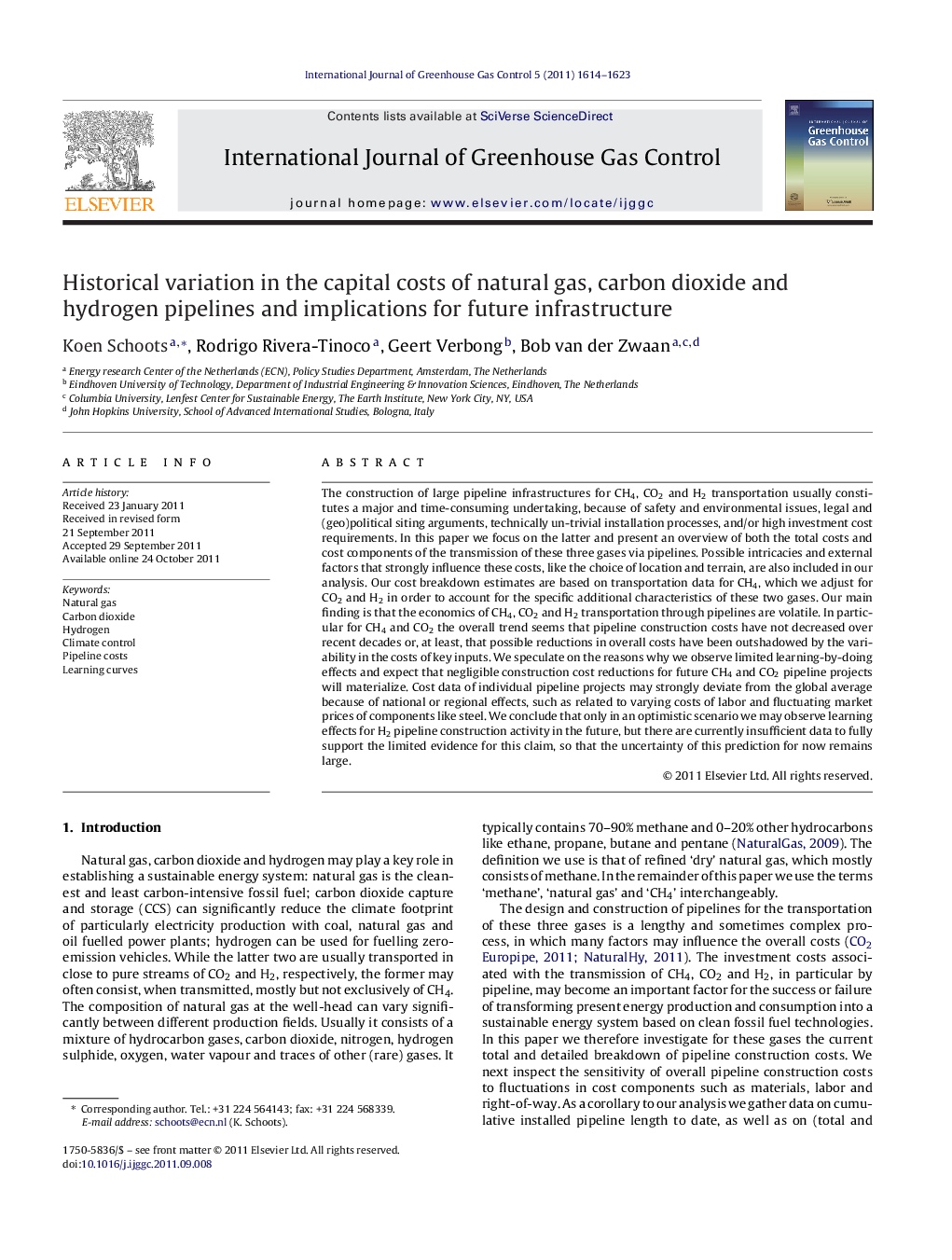| کد مقاله | کد نشریه | سال انتشار | مقاله انگلیسی | نسخه تمام متن |
|---|---|---|---|---|
| 1743572 | 1522018 | 2011 | 10 صفحه PDF | دانلود رایگان |

The construction of large pipeline infrastructures for CH4, CO2 and H2 transportation usually constitutes a major and time-consuming undertaking, because of safety and environmental issues, legal and (geo)political siting arguments, technically un-trivial installation processes, and/or high investment cost requirements. In this paper we focus on the latter and present an overview of both the total costs and cost components of the transmission of these three gases via pipelines. Possible intricacies and external factors that strongly influence these costs, like the choice of location and terrain, are also included in our analysis. Our cost breakdown estimates are based on transportation data for CH4, which we adjust for CO2 and H2 in order to account for the specific additional characteristics of these two gases. Our main finding is that the economics of CH4, CO2 and H2 transportation through pipelines are volatile. In particular for CH4 and CO2 the overall trend seems that pipeline construction costs have not decreased over recent decades or, at least, that possible reductions in overall costs have been outshadowed by the variability in the costs of key inputs. We speculate on the reasons why we observe limited learning-by-doing effects and expect that negligible construction cost reductions for future CH4 and CO2 pipeline projects will materialize. Cost data of individual pipeline projects may strongly deviate from the global average because of national or regional effects, such as related to varying costs of labor and fluctuating market prices of components like steel. We conclude that only in an optimistic scenario we may observe learning effects for H2 pipeline construction activity in the future, but there are currently insufficient data to fully support the limited evidence for this claim, so that the uncertainty of this prediction for now remains large.
► Learning for pipeline construction, if available, is outshadowed by cost variability.
► Pipelining is a mature technology, for which much experience has been gained.
► Pipeline projects are heterogeneous with widely varying technical and cost specifics.
► Pipeline cost components tend to reflect (commodity) market price developments.
► Pipeline costs are strongly determined by the properties of the transported gas.
Journal: International Journal of Greenhouse Gas Control - Volume 5, Issue 6, November 2011, Pages 1614–1623